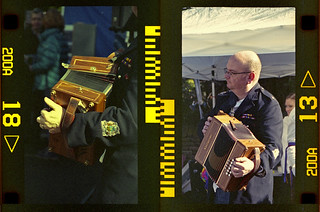
This is a composite image of two separate frames, I like the way the barcodes suggest the accordion keyboard which is hidden from the viewer.
In 2010 I decided to start taking photos with my collection of film cameras, using a different one each week. After 10 years, and 522 cameras, I brought the project to a close. I have been writing a regular column about it in the UK magazine "Amateur Photographer" since 2011.
